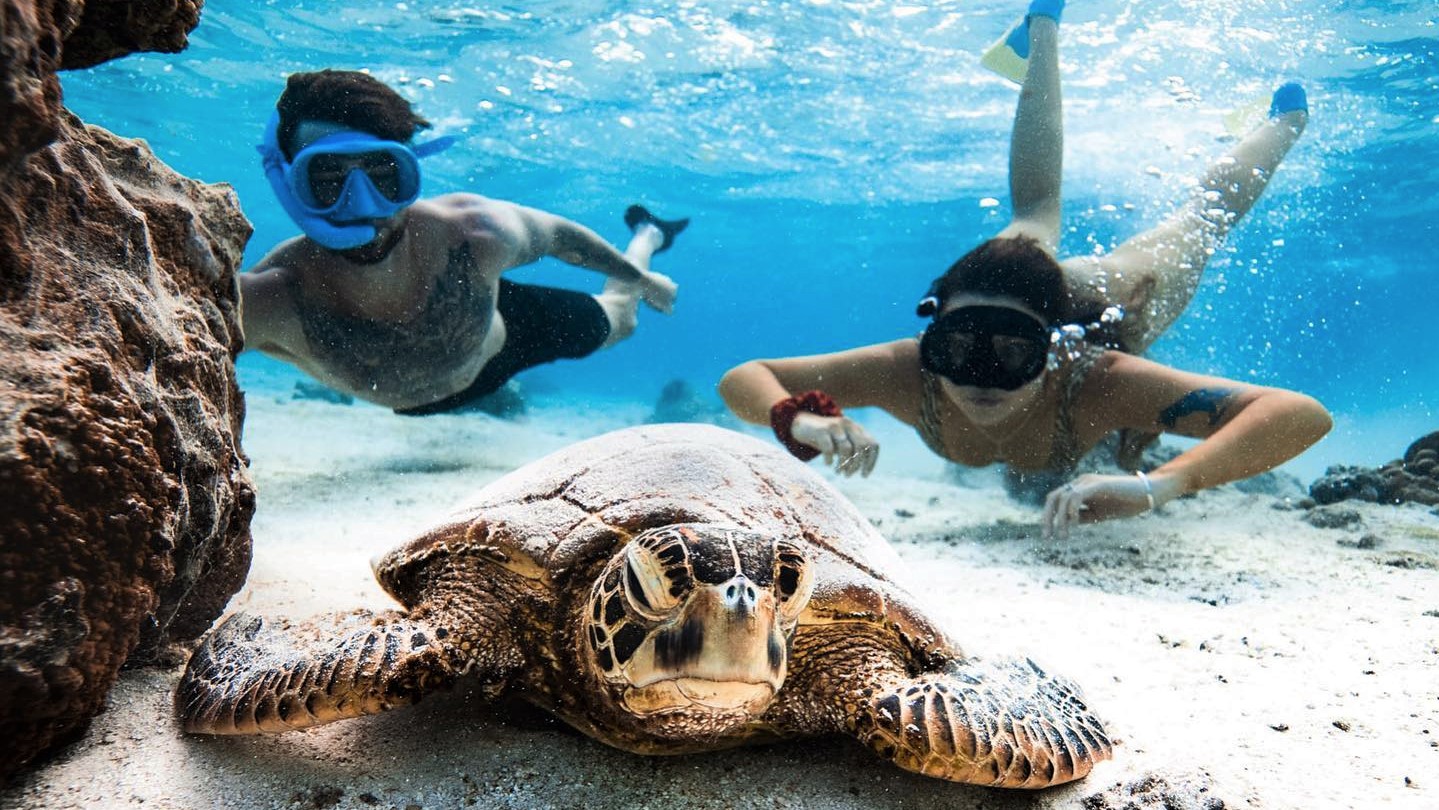Concerned turtle tour operators await ‘clear mandated guidelines’
Tuesday 24 January 2023 | Written by Matthew Littlewood | Published in National, Tourism

Visitors take part in the acclaimed Cook Islands Turtle Tour. Photo: Charlotte Piho Photography/22061506
Several months after it was first mooted, turtle tour operators are still waiting for clear mandated guidelines for their operations.
Cook Islands News has attempted to get in touch with Ministry of Marine Resources (MMR) secretary Pamela Maru about progress on the rules, but has so far not received a response.
Cook Islands Tourism Corporation chief executive Karla Eggelton said it was working with MMR and the National Environment Service (NES) to help develop a safety regime for the tours that satisfied everyone from an environment and commercial standpoint.
“In terms of the turtle passage, we have no regulatory mandate, but we’re obviously concerned about visitor safety, particularly as turtle tours become increasingly popular,” Eggelton said.
“MMR and the NES’s concern is more focused on the ecosystems and protection of the environment.”
Eggelton said: “We haven’t met yet with Turtle Tour Operators, but we have reached out to every operator and now working on an agreed date to meet as soon as possible”.
“In the meantime, we are looking to review our Memorandum of Understanding and applying some monitoring and compliance exercises with the support of Turtle Tour Operators to identify opportunities to strengthen safety and success of turtle tours,” she said.
Go Local operations manager Matthew Robinson said it had met with Cook Islands Tourism, but was still waiting for some clear rules and regulations.
“We’re very keen to get something specific because the environment has become too crowded,” Robinson said.
“There’s greater awareness now of the need for safety and protection of the environment.”
Jane Archer, who worked for Charlotte Piho Photography, wished all turtle tour operators the best, but said “there has to be rules, and they have to be enforced”.
“If something isn’t done soon, then someone could drown,” Archer said.
“All guides should need to be qualified to at least (Australian Surf Life Safety) Bronze Medallion standard. We know some operators are getting there, but it needs to be the standard for everyone.”
Archer said the rules needed to be properly enforced.
“That means there needs to be people monitoring the tours, particularly in regards to how many people are going out there in the water, and how many guides there are assisting them,” she said.
Back in July, Maru told Cook Islands News: “We are looking to develop management tools, which may include regulations. At minimum best practice guidelines are a good way to ensure everyone in the sector are advised on what practices should be followed”.
At the time, MMR was aiming to have a draft policy available by December.
In the interim, Cook Islands Tourism Corporation and most of the marine tourism operators in Rarotonga have agreed to a voluntary regime in order to ensure people’s safety.
The guidelines include a maximum of four visitors per certified guide in all passages on Rarotonga and deep lagoon waters at all times, tours in the Avaavaroa Passage restricted to operate only during low tide; and up to two hours either side of low tide (only if it is deemed safe to do so), automated external defibrillators (AED) must be available at all times, and rescue tubes must be available at all times for each certified guide.












































